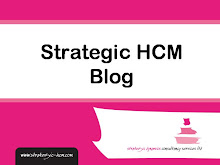Although these terms are often used imprecisely and interchangeably (with each other, and with other terms such as social media and social software), I believe 'social networking' and 'web 2.0' do refer to different things.
The way I separate the two is by explaining that:
social networking focuses on connecting people to each other, whereas
other web 2.0 applications focus on connecting people with the content that has been generated by other people.
So I might connect to someone via Linkedin and then subscribe to his or her blog to access the content this person has generated. (Of course, it is not quite as simple as this, as I may often subscribe to a person’s blog because I value them and their thinking, not just because of what they are currently writing about – in many ways I am in fact subscribing to the person, not just their content.)
So the points in my previous post about connecting apply in particular to social networking. In many ways, social networking is only a technology enabled way of doing what good networkers have always done, but this can now be done by many more people, and on a much broader scale
See also my previous posts:
Social connecting in business
HR 2.0 survey.
Take my 'Social connecting in business' survey here.










